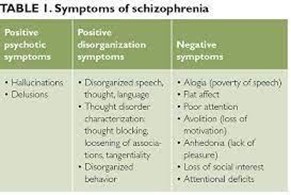A nurse is teaching a client who has gambling disorder about the use of cognitive reframing. Which of the following instructions should the nurse give the client?
"Perform deep-breathing exercises when you feel the urge to gamble."
"Use a journal to write down thoughts related to gambling."
"Reward yourself for not going to the casino for 1 week."
"Replace thoughts of gambling with positive self-statements."
The Correct Answer is D
Choice A rationale:
Deep breathing exercises can be a relaxation technique, but they don't directly address cognitive reframing.
Choice B rationale:
Using a journal to write down thoughts related to gambling can be useful for self-reflection, but it's not specifically a cognitive reframing technique.
Choice C rationale:
Rewarding oneself for not going to the casino can be part of a behavioral approach to managing gambling disorder, but it's not a cognitive reframing technique.
Choice D rationale:
Cognitive reframing involves identifying and replacing negative or distorted thoughts with positive and more rational thoughts. In the context of gambling disorder, this technique can help the client challenge and change the cognitive patterns that contribute to their gambling behavior.
Nursing Test Bank
Naxlex Comprehensive Predictor Exams
Related Questions
Correct Answer is B
Explanation
Choice A rationale:
A 7-month-old infant with Down syndrome is less likely to use a spoon.
Choice B rationale:
Crawling short distances is a developmental milestone that can be expected at this age.
Choice C rationale:
Speaking five to eight words is not an appropriate milestone for a 7-month-old infant.
Choice D rationale:
Standing with assistance usually occurs around 9-12 months, which might be delayed in infants with Down syndrome.
Correct Answer is B
Explanation
Choice A rationale:
Magical thinking is a positive symptom of schizophrenia, involving unrealistic beliefs or perceptions.
Choice B rationale:
A flat affect is a negative symptom of schizophrenia characterized by reduced emotional expression. Negative symptoms involve a decrease or loss of normal functioning, and a flat affect is one of the most common negative symptoms seen in schizophrenia.
Choice C rationale:
Ideas of reference are also a positive symptom, involving the belief that neutral or unrelated events have special significance related to oneself.
Choice D rationale:
Clang association is another positive symptom, involving the association of words based on similar sounds rather than meaningful connections

Whether you are a student looking to ace your exams or a practicing nurse seeking to enhance your expertise , our nursing education contents will empower you with the confidence and competence to make a difference in the lives of patients and become a respected leader in the healthcare field.
Visit Naxlex, invest in your future and unlock endless possibilities with our unparalleled nursing education contents today
Report Wrong Answer on the Current Question
Do you disagree with the answer? If yes, what is your expected answer? Explain.
Kindly be descriptive with the issue you are facing.
